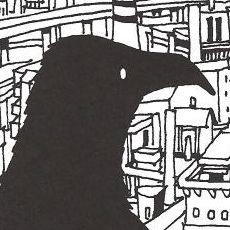Tag: post-apocalyptic
-
Eden in name only
/
/ MangaRead More →: Eden in name onlyHiroki Endo calling his manga ‘Eden‘ is a hint. Eden is supposed to be a paradise on Earth, but Endo‘s version is more like Hell. It’s sarcasm on his part, I think, because this is a contrary and brutal series, where anything that’s good is crushed and anything that’s innocent is (often literally) raped. For…
-
The harsh beauty of Tsutomu Nihei's Biomega
Read More →: The harsh beauty of Tsutomu Nihei's BiomegaHappy new year, everyone! Time sure flies and it’s now looking likely that this blog will live to see it’s fourth anniversary on the 4th of March, which is just… surreal! This time of year also provides me with the rare opportunity to immerse in some new worlds of fiction. Last year I fell under…
-
Casshern Sins: I wanted to leave my color on my city
/
/ ReviewsRead More →: Casshern Sins: I wanted to leave my color on my cityKnowing that some day you will die is not a prospect that one’s thoughts tend to dwell on, but in Casshern Sins, when death is everywhere and the land is ravaged with decay, that your life will some day end is impossible to ignore. It’s a feeling that I often get from this show, but…
-
Until I kill you, I'll even eat mud to survive! Hokuto no Ken
/
/ ReviewsRead More →: Until I kill you, I'll even eat mud to survive! Hokuto no KenWhen I finished watching Legend of the Galactic Heroes late last year, I felt like I’d had my fill of sprawling eighties anime series for a fair old time to come, but fate, it seems, has long been conspiring against me. My destiny had seven scars on his chest. A mere swipe of his hand…
-
When eternal love goes wrong [Kurozuka]
/
/ ReviewsRead More →: When eternal love goes wrong [Kurozuka]I had high hopes for Kurozuka, because it is a genre of anime I tend to enjoy, that being stylish, far-fetched, visually-intoxicating science fiction. It is a beautifully drawn journey, in-which 1,000 years of vampiric romance sweeps across the Heian period of Japan to the bombing of Japanese cities during World War 2 to a…
-
Devilishly delicious horror: Devilman manga review
Read More →: Devilishly delicious horror: Devilman manga reviewMy damned savoir and his demented smile lurked forth from the shadows. His name was none other than Go Nagai and his bloody offering was Devilman. And it was perfect. Perfectly and utterly disturbing.
-
Basking in the inferno of Cloverfield, remembering Blue Gender
/
/ ReviewsRead More →: Basking in the inferno of Cloverfield, remembering Blue GenderHead-spinning, stomach-turning and mind-racing are a few of the adjectives I’d choose to describe how I felt when I stumbled out of the cinema last night, having just suffered through Cloverfield. To say I’d been looking forward to this film would be an understatement, and even though I’d only discovered its baffling trailer in early…
